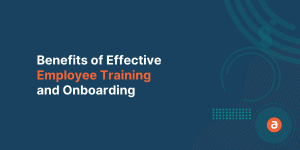The key to retaining users and customers for any application is onboarding. Properly onboarding users help them master and fall in love with your software. Think of user onboarding as leading your users on a journey of a series of simple tasks, to reveal the benefits of your software.
To improve your user onboarding experience, we’ve compiled the top 10 best practices for onboarding new SaaS users.

1) Learn your customers’ behaviors and their specific needs
The first step to a successful onboarding process is determining why’ customers are looking for your product, and then finding a way to fulfill this particular need. Utilize surveys and other research tools to determine your users’ primary pain point and be sure to highlight how your application solves that problem during their onboarding.
2) Leverage multiple touchpoints
In order to increase user interaction and retention, you need to put in place multiple channels of communication. Obviously, in-application messaging will play a vital role in your onboarding strategy, but you should consider what other user onboarding channels to use outside of the application including:
- Automated email sequences
- Live chat
- Text messages
3) Make the Aha! moment obvious
The ‘Aha moment’ is when the customer starts to comprehend the value of your software. Don’t wait to wow them. Your onboarding process should get them to the Aha! moment as quickly as possible. Complicated sign-up forms or a painful login experience create a barrier between your new user and their Aha moment. Create an onboarding experience that seamlessly guides them and allows them to discover the value of what your platform does. Onboarding isn’t about telling someone why they’ll love your software. It’s about showing them. During the onboarding, new users should think, ‘Wow this is going to save me so much time,” or “this is so much easier,” or whatever the unique value your software adds.
4) Customize each user’s experience
Not every user has the same needs. Don’t waste someone’s time onboarding them to a feature they’ll never use. Create unique onboarding experiences that are custom-tailored by different user types.
5) Give a personal touch
To encourage long-term commitment, try developing personal rapport with your users. Customers want their products to be relatable. You can achieve this by adding some funny lines or comments in your chats and messaging that give your onboarding sequence some personality.
6) Establish metrics to measure your success
It’s important to measure how users are interacting with your software and your onboarding sequence. Stats to track include:
- Churn rate
- Time to complete onboarding
- Percent of people who abandon onboarding
- Login frequency
7) Remind people when they haven’t finished onboarding
So if you’re following tip 6 and you’re tracking who hasn’t completed onboarding, leverage that data to remind people to finish the process. Setup automated alerts that nudge people to complete their onboarding.
8) Break onboarding down into bite-sized chunks
Don’t overwhelm your users with a 20-item checklist the first time they log in. Create some milestones as a part of your onboarding sequences so that users feel like they’re making progress. Break down onboarding into chunks and wait to introduce the next journey until after users complete the first.
9) Test and revamp your onboarding as needed
You’ll need to recruit some volunteers to test your onboarding process. Make tweaks based on their feedback and the stats you have from tracking the process. Test the tweaks and repeat the process again.
10) Onboard existing users to new features
Onboarding is not a once and done process. It’s for more than just new users. When you roll out new features and updates, you’ll need to make a plan to onboard your existing users to the new features. The same principles apply to onboarding people to new features. Make sure your onboarding illustrates the value of how the new feature makes a task easier or saves them time.
How you onboard users could make or break your software. Make sure you’re setting your application and your users up for success. Be sure to subscribe to our blog for more tips on SaaS onboarding.
Image Source: Photo by Brad Javernick













